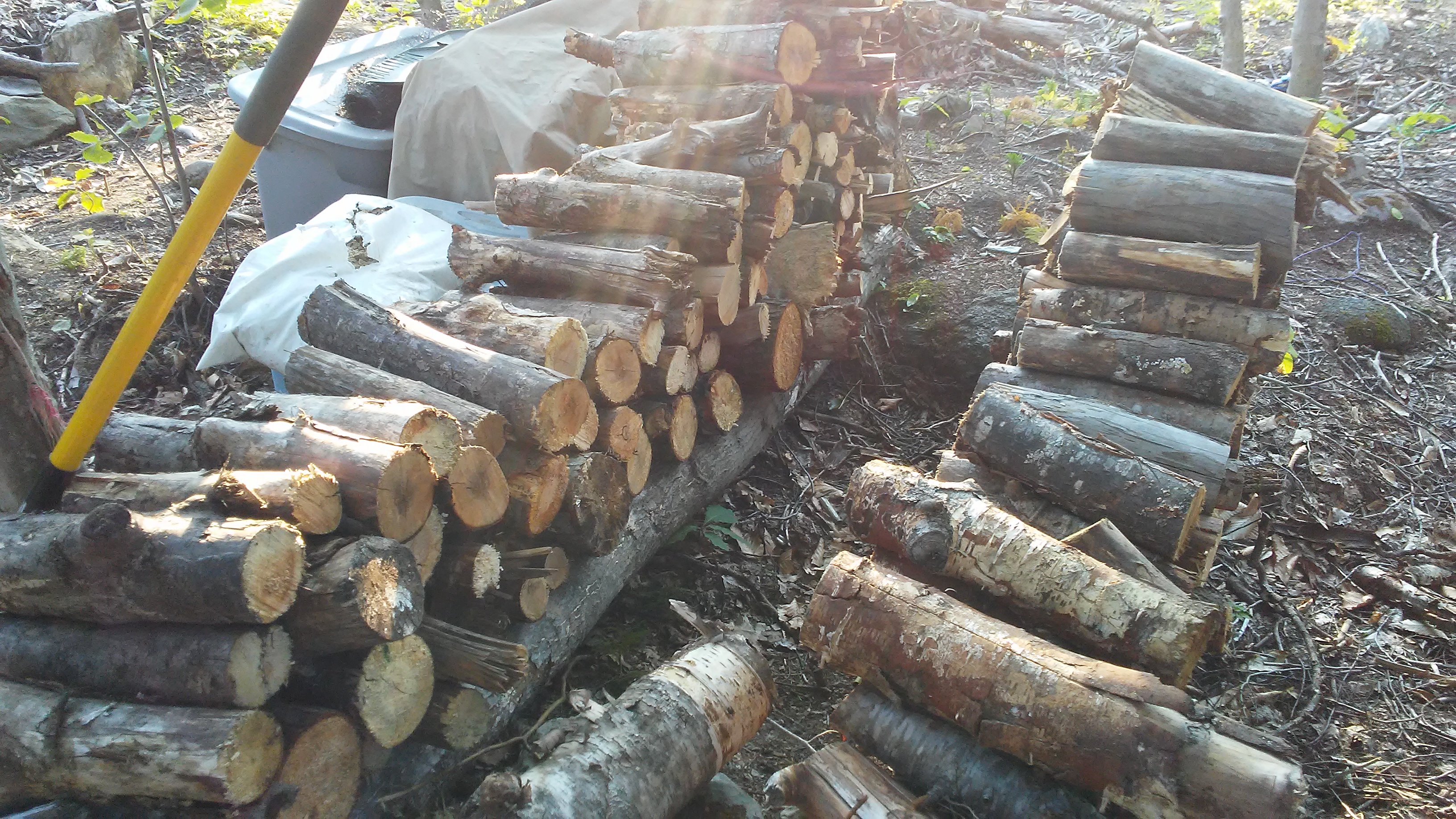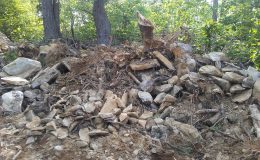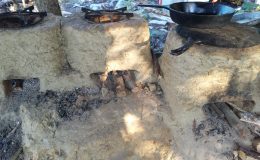Mini Cordwood House Plans: Energy Efficiency
- By : Sarah
- Category : Off Grid Utilities, Planning and Goals
- Tags: clay, cob, cordwood, natural building, solar

Being energy efficient is a must for us here on the homestead. We don’t have the time to waste energy. This is going to be very important to keep in mind when we build our cordwood house this spring.
The most important energy in our home build is heat. We collect wood from our lot to heat our home throughout the winter. We plan to add a passive solar aspect to our heating when we build this house. This will be done by setting the house South facing (as best as the land permmits) with many windows on that side so that we can absorb as much heat from the sun as possible. The hot summer sun can be shaded by making the overhang of the roof stick out enough to block the sun at it’s higher points throughout the day. We will need to have a longer overhang to protect the cob anyway, but the angle of the sun does play a role in how long it will be.
Another aspect of passive solar heating is thermal mass. Rock, water and cob mortar are all thermal mass. They absorb the sun’s heat throughout the day and release it at night, into the house. Just having a house built out of cordwood and cob adds thermal mass. There will also be a garedn surrounded by rock on the South side of the house for more passive solar. I can grow beans on trellises or corn and sunflowers to block the extra heat in the summer. A gorgeous duck pond in front of the house would also add passive solar heat…
Links on passive solar heating:
Well insulated homes work perfectly with passive solar. Absorb the sun’s heat with solar mass, then trap it with insulation. The approximate r value of a 16 inch cordwood wall with sawdust insulation is 20. Ours will be closer to 24 inch thick.
Passive earth cooling is what we will have in place of air conditioning, which would be way to much work to actually get. We will use tubes that are buried in a 6 foot deep trench to collect the cool air from the earth. One end will open to the outside, where fresh air can come in, and the other end opens into the house, where the earth cooled air cools the house off. This would also give us the option for cool food storage in the winter. We could potentially put an insulated box, like a cooler, the the end of the cool air tube would open in to. The cool air would be trapped in the insulated box, where our food could eaily be stored.
Some links on earth tubes:
Water collection is another important adition to this house. Our rainwater collection system broke, so the Man has been hauling water from the stream. NOT energy efficient. The new system will need gutters put up on the old house and 4 or 5 rainbarrels, connected together. The gutters will drain into the rainbarrels to fill them up. The old house is just uphill from the new house, which will give us water pressure through gravity by running the pipes from the barrels down into the new house. Just like real running water!
Links on rainwater collection:
We also have solar panels that charge batteries to run our lights and charge our devices. The new house will hopefully have a bigger solar set up, eventually. Our panels also charge the batteries for all our power tools. The large chainsaw is the only tool we use regularly that requires gas.
I have been encouraging the Man to put together a post about our solar setup, since he is the one who is more profficient in that area. He hasn’t got there yet. (If you post a comment to encourage him, I will be sure he gets the message.


